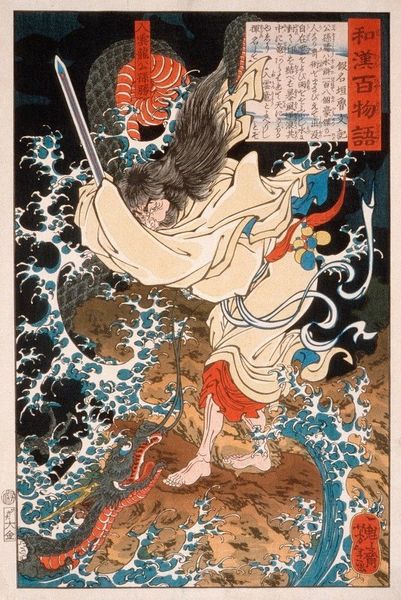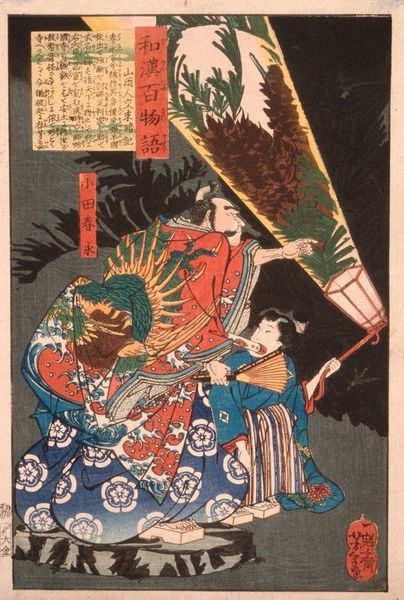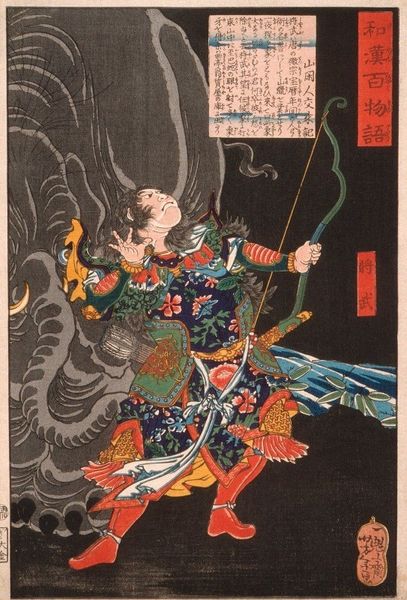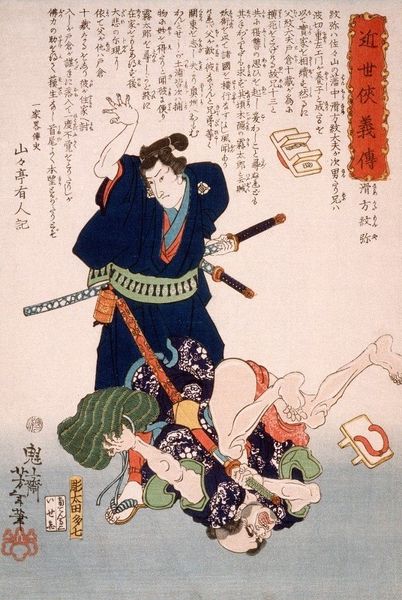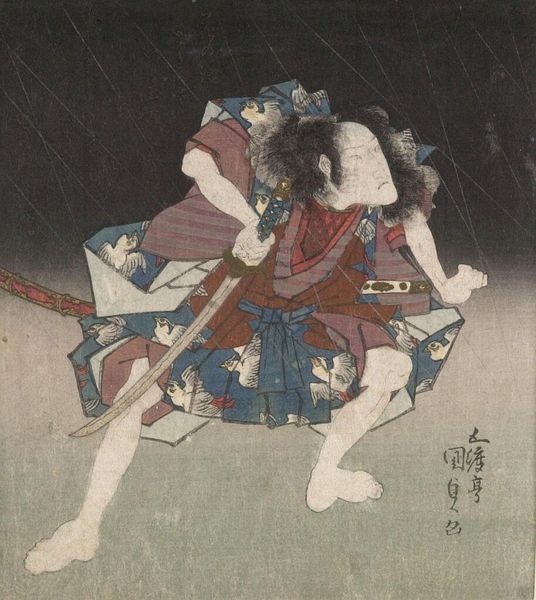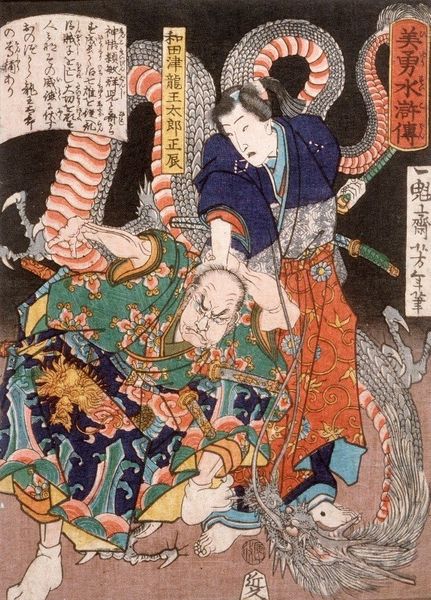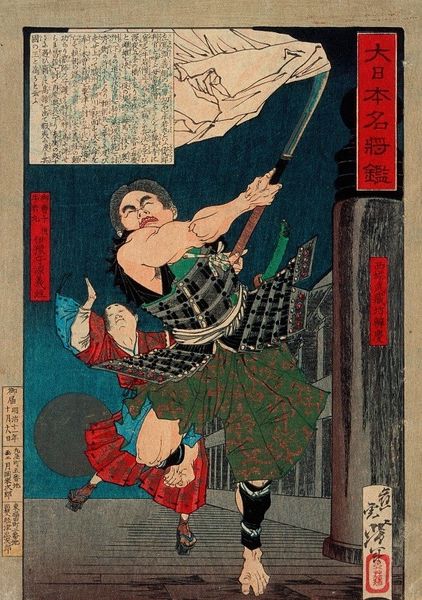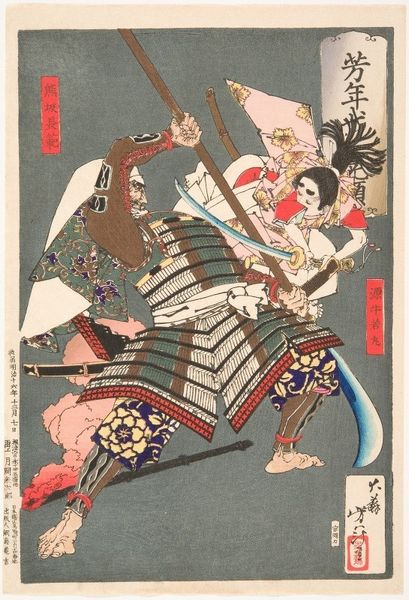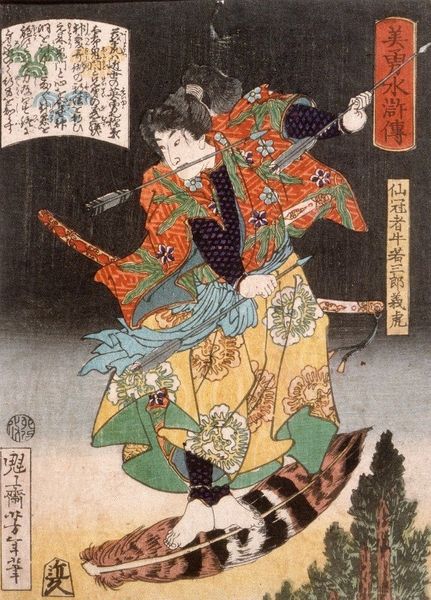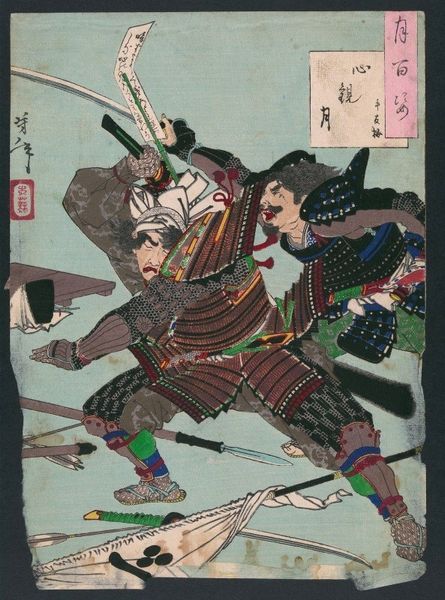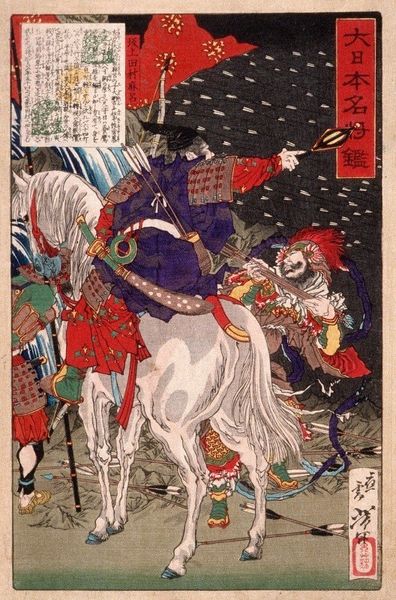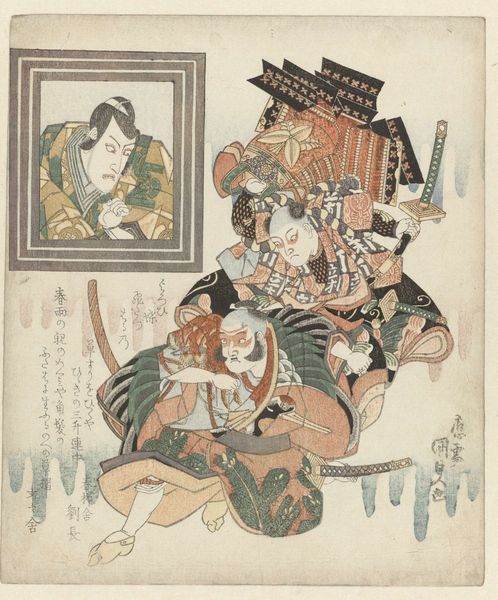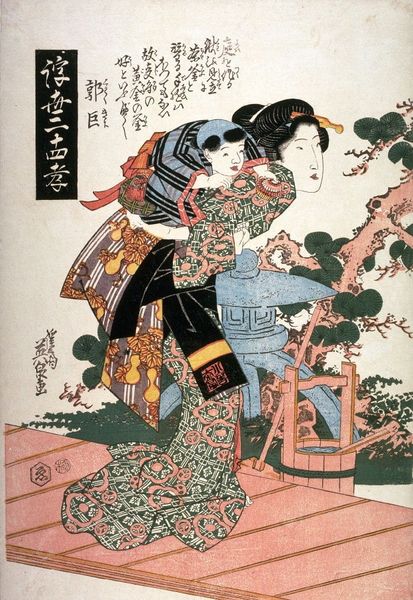
Copyright: Public Domain: Artvee
This woodblock print by Tsukioka Yoshitoshi depicts a scene of tense restraint, capturing Soga no Gorō Tokimune being held back by Gosho no Gorōmaru. Through its visual encoding, the print provides a glimpse into the socio-political landscape of 19th-century Japan. Yoshitoshi made this print during the Meiji era, a period of rapid modernization and social upheaval as Japan opened up to the West. The artist draws upon the history of the samurai class, referencing a past of warrior values and feudal loyalty. The figures shown were known for their bravery and sense of duty. But Yoshitoshi made this print at a time when the samurai class were being dismantled, and these prints played a role in preserving cultural memory. To understand this print better, we must look at the complex relationship between art, commerce, and cultural identity in Meiji-era Japan. By researching the print's production, distribution, and reception, we can gain a deeper appreciation of its social and historical significance.
Comments
No comments
Be the first to comment and join the conversation on the ultimate creative platform.
